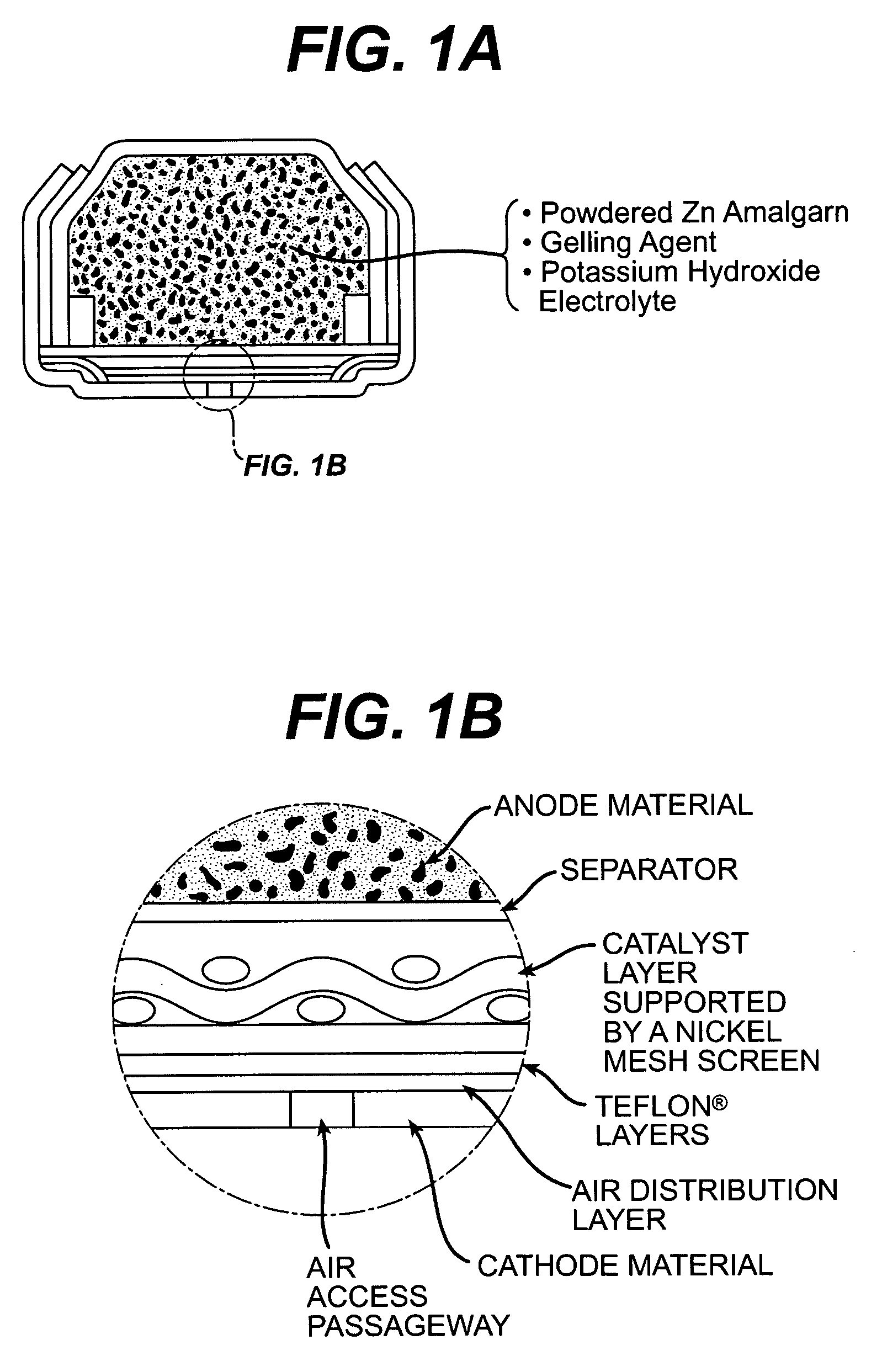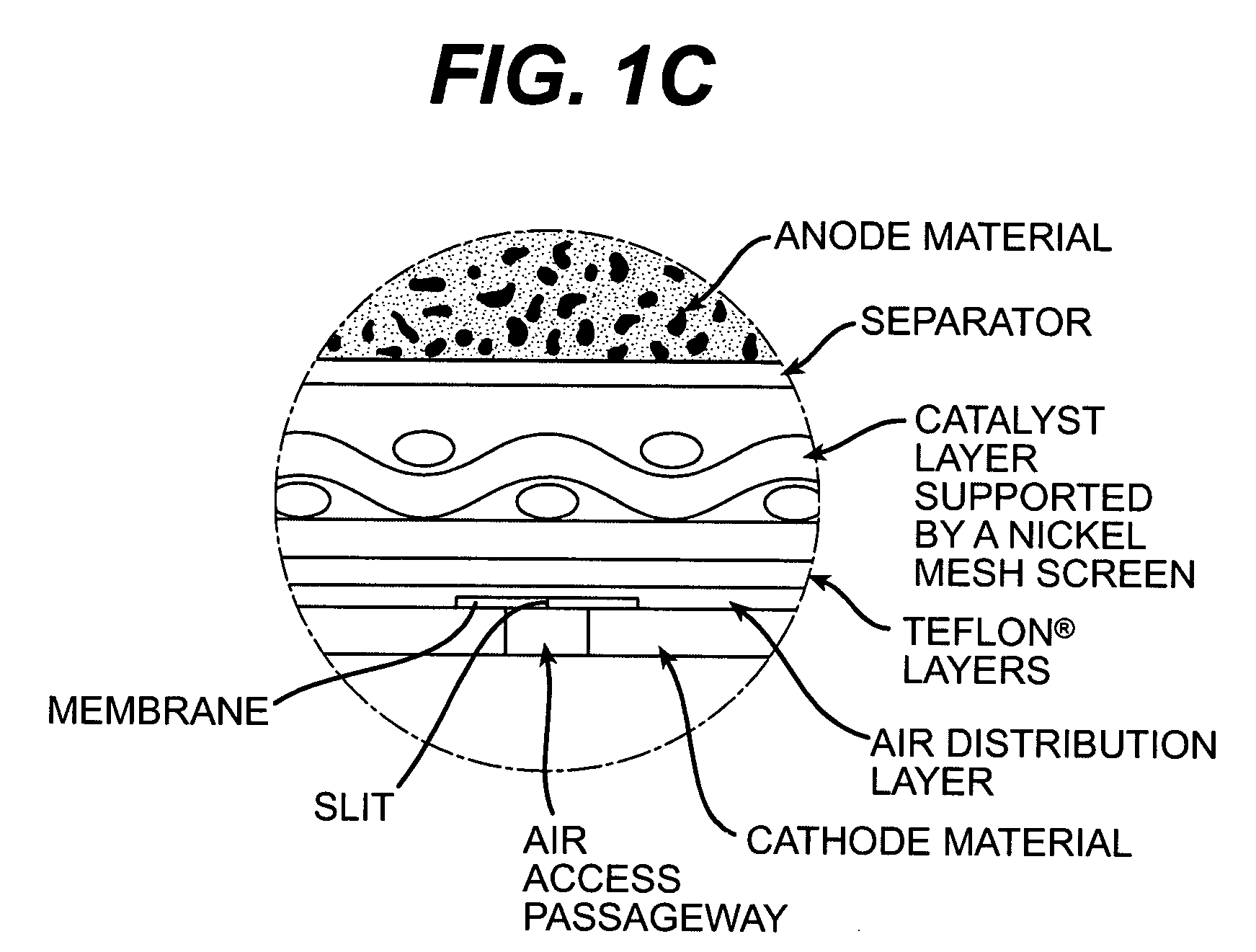Air electrode batteries
- Summary
- Abstract
- Description
- Claims
- Application Information
AI Technical Summary
Benefits of technology
Problems solved by technology
Method used
Image
Examples
Embodiment Construction
[0054]Referring to the drawings, FIG. 1C shows the same enlarged view of the cathode of the cell of FIG. 1B, but with a thin resilient membrane adhesively mounted on the cathode and overlying the air access passageway. In the region of the passageway, the membrane has a discontinuity therein in the form of a straight cut so that a slit membrane forms a valve for control of the flow of gases through the air access passageway. The membrane is made from latex having a thickness of 100 μm. Other materials, such as silicone or nitrile, may be used. The membrane is adhered to the cathode about the air access passageway by means of Specseal 105 or other suitable adhesive. The length of the slit is 3 mm. Slit lengths up to 7 mm may be used, however each end of the slit should be spaced from supported membrane material (ie material adhered to the cathode) by unsupported membrane material (ie membrane material located in the passageway and not adhered to the cathode). Thus, the conventional z...
PUM
| Property | Measurement | Unit |
|---|---|---|
| Length | aaaaa | aaaaa |
| Length | aaaaa | aaaaa |
| Thickness | aaaaa | aaaaa |
Abstract
Description
Claims
Application Information
 Login to View More
Login to View More - R&D
- Intellectual Property
- Life Sciences
- Materials
- Tech Scout
- Unparalleled Data Quality
- Higher Quality Content
- 60% Fewer Hallucinations
Browse by: Latest US Patents, China's latest patents, Technical Efficacy Thesaurus, Application Domain, Technology Topic, Popular Technical Reports.
© 2025 PatSnap. All rights reserved.Legal|Privacy policy|Modern Slavery Act Transparency Statement|Sitemap|About US| Contact US: help@patsnap.com



